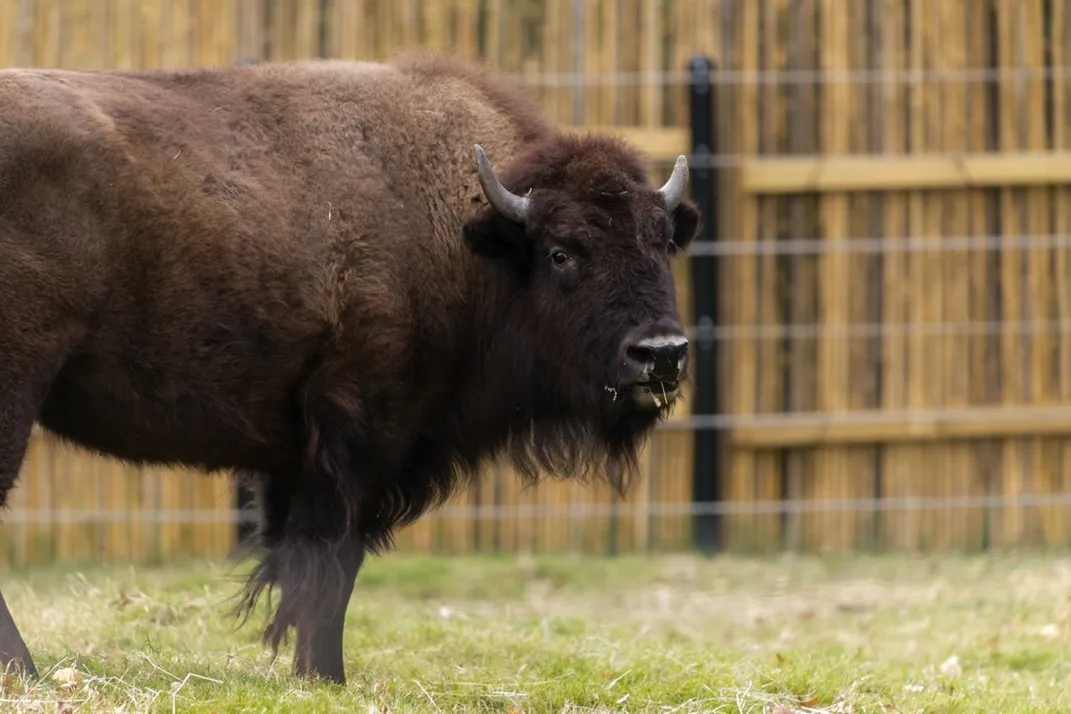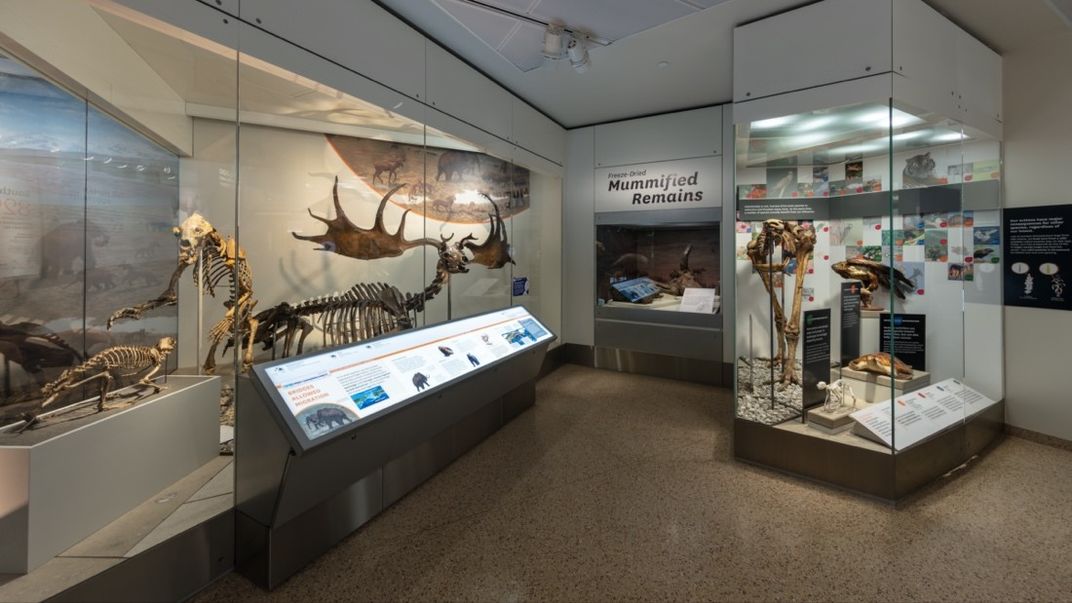NATIONAL MUSEUM OF NATURAL HISTORY
Bison Mummies Help Scientists Ruminate on Ancient Climate
Bison mummies hold valuable information for researchers who want to understand how biodiversity evolved and responded to climate change.
/https://tf-cmsv2-smithsonianmag-media.s3.amazonaws.com/blogging/featured/Mummified_Bison_Remains_on_a_table_in_a_lab..jpg)
Over 28,000 years ago, a steppe bison, Bison priscus, died in present-day Alaska. Its body was preserved by permafrost until scientists discovered it in 1951. The bison now rests in the Smithsonian’s National Museum of Natural History, able to be seen by a virtual tour or in the “David H. Koch Hall of Fossils - Deep Time” when the museum reopens.
"It’s one of the few relatively complete bison mummies from Alaska. Most of our better-preserved bison mummies come from Siberia,” said Dr. Advait Jukar, a paleontologist at Yale University and the museum's Department of Paleobiology.
But this specimen is more than a fascinating example of a now-extinct species. The bison, and other frozen mummies, hold valuable information for researchers who want to understand how biodiversity evolved and responded to climate change before the Anthropocene— a period defined by humans’ impact on the biosphere and climate system — began.
"By studying mummies and fossils from periods prior to the Anthropocene, we can track how populations and ecosystems changed through time in the absence of outsized human impacts,” said Dr. Josh Miller, a paleoecologist at the University of Cincinnati who has worked with Jukar. “This allows us to think more critically about how we impact living populations and informs strategies for how we preserve species and ecosystems today.”
How the steppe bison came to the Americas
Roughly 500,000 to 12,000 years ago, the steppe bison spread from Siberia to the Americas. They explored the North American continent as ice sheets ebbed and flowed during the late Pleistocene Epoch’s last ice ages.
“Bison are actually relative newcomers to North America, having migrated across the Bering Land Bridge about 200,000 to 170,000 years ago. They came from Siberia and migrated southward into Alaska and Canada,” said Abby Kelly, a doctoral candidate and paleobiologist at the University of Cincinnati who works with Miller.
Where steppe bison migrated in North America depended on what regions were glacier-free. As each new ice age began, ice sheets would grow, blocking paths that once connected different bison populations from each other. Some of these fragmented communities gradually evolved over time into new species, like the now-extinct giant bison, Bison latifrons.
“We see that south of the glacial region and boreal forests, bison size increased into the giant long-horned bison. But these giant bison and steppe bison still bred together at some point. Then, miles of ice across Canada and the northern continental United States permanently separated the bison species. The giant bison eventually disappeared as smaller bison species evolved at the end of the Late Pleistocene,” said Kelly. The smallest bison species, Bison bison bison, still exists today.

When the last ice age ended, steppe bison likely struggled to adapt to the rapidly changing climate and the arrival of modern humans. Though the species is now extinct, scientists can still use bison mummies to study its history.
Scientists love their mummies
Pleistocene mummies are a unique resource for paleobiologists who want to learn more about past animals’ responses to environmental stress. This is because mummies usually have well-preserved tissue for sampling.
“A mummified steppe bison is an amazing snapshot of the animal. You get so much richer of an ecological summary,” said Kelly. For example, stomach samples from mummies can give valuable context clues about the animal's diet.
Mummified bison from permafrost regions like Alaska and Yukon also typically have well-preserved DNA, because the cold stops the decay process. Researchers are harnessing this DNA alongside tissue samples to trace ancient steppe bison’s migration and gradual evolution.
“Frozen mummies preserve strands of ancient DNA that scientists can use to reconstruct the genomes of these animals. That DNA can let us understand ancient populations, including how they moved and dispersed across North America and Eurasia,” said Jukar.
It is important to see how steppe bison spread during the Pleistocene’s last five ice ages, because that was a time of drastic climate change. Researching this ancient animal’s history helps scientists understand how species have responded to environmental stress in the past and how they could react in the future.
Climate change may lead to more mummies

Present-day anthropogenic climate change is accelerating and, in turn, causing Alaskan, Yukon and Siberian permafrost to thaw faster. As permafrost thaws, scientists expect to unearth more preserved mummies.
“Because climate change is melting permafrost so quickly, a lot of these animals are coming out of melted muck,” said Jukar.
These mummies as well as the museum’s 40 million fossil specimens hold useful information about daily life and habitat change during the Pleistocene Epoch.
“Our collection has millions of specimens, which each hold a lot of data about how and where past animals lived. We want to get this data to the forefront so that we can learn more about the past, present, and future.” said Jukar.
Related Stories:
What A 1000-Year-Old Seal Skull Can Say About Climate Change
Here's How Scientists Reconstruct Earth's Past Climates
Get to Know the Scientist Reconstructing Past Ocean Temperatures

